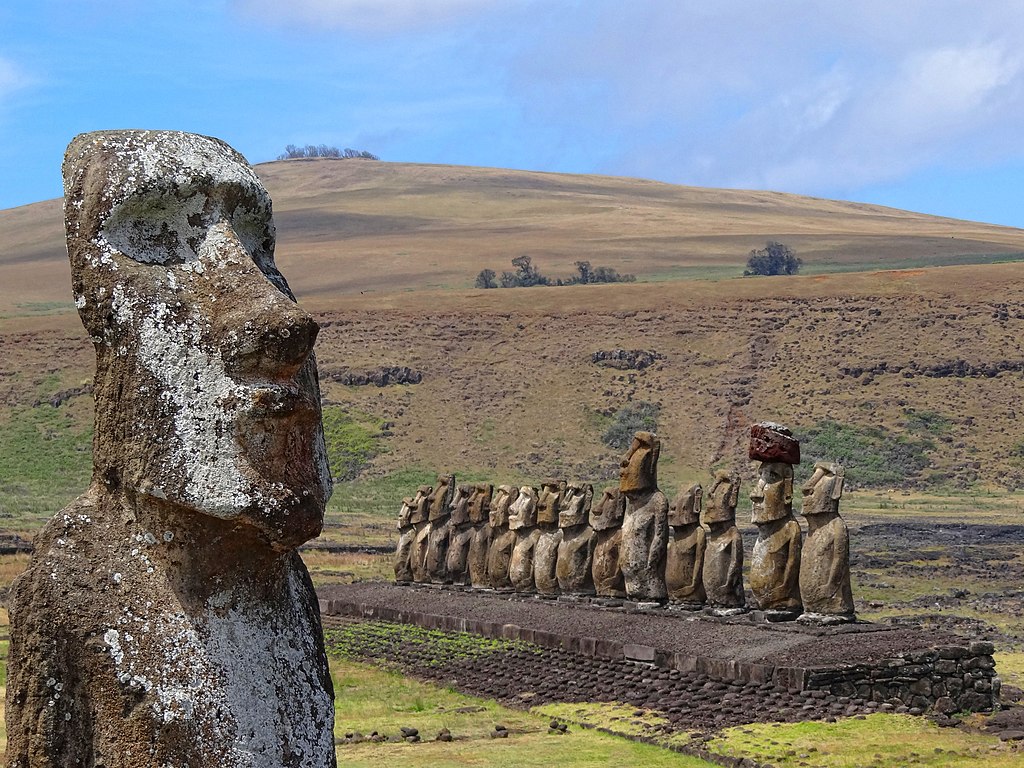'Moai designs are getting lost': extreme weather chips away at Easter Island statues
Experts call for conservation action as the features on Rapa Nui’s famous monoliths are eroded by fire and rain
Charis McGowan in Easter Island, Chile
Tue 21 May 2024 02.00 EDT
The Ahu Tahai moai, on the east side of Rapa Nui, also known as Easter Island, is an impressive 4.5 metres high. Carved from a soft volcanic rock, the statue looks out solemnly over the island, with its back to the bay.
The Tahai (“where the sun sets”) and the island’s other thousand or so moai were erected roughly between 1100 and 1700 as a representation of Rapa Nui’s ancestors.
The stoic monoliths have watched over battling Polynesian clans, endured the plundering of colonisers and survived reckless treatment by the British – who allegedly shot at the moai for target practice while renting the island for sheep farming in the 1900s. Yet the statues’ latest adversary could be their most significant: the climate crisis. Ahu Tahai’s face has gradually lost its original features, including the cut of the nose and the sockets of the eyes. Its hands, once prominent, are now smoothed into the body.
“The designs are getting lost due to the erosion of the rock layers,” says Daniela Meza Marchant, a conservator for the Ma’u Henua Indigenous community, who look after the island’s sacred archaeological sites.
More:
https://www.theguardian.com/global-development/article/2024/may/21/easter-island-rapa-nui-statues-moai-erosion-climate-crisis-chile-extreme-weather
















